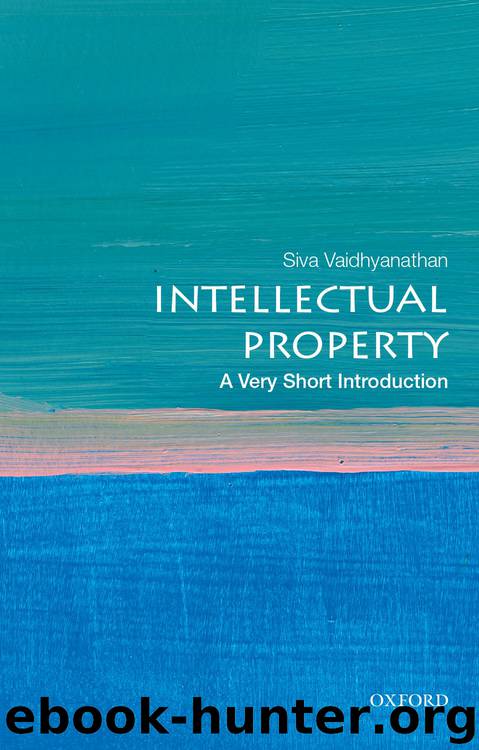Intellectual Property by Siva Vaidhyanathan

Author:Siva Vaidhyanathan
Language: eng
Format: epub
Publisher: Oxford University Press
Published: 2016-12-17T05:00:00+00:00
Imagine a world without patents
In June 2014 Elon Musk surprised his investors and most of the technology world. He posted on the Tesla Motors blog a statement that “Tesla will not initiate patent lawsuits against anyone who, in good faith, wants to use our technology.” Tesla is one of the world’s leaders in the production of automobiles that do not directly use fossil fuels. Musk, the founder and chief operating officer of Tesla, started the company in 2003. In the course of ten years Tesla invented and patented a slew of technologies, which, in helping to make its expensive, high-performance vehicles, have made Tesla a proof-of-concept for electric cars. Tesla finally sold enough cars to turn a profit in 2013. Several other companies, including Chevrolet, Ford, Toyota, and Nissan, had marketed less expensive electric cars available in select markets. But the technologies had not become standardized and the marginal cost of producing electric cars had not dropped significantly in the decade before. Musk explained in his blog post that Tesla had vigilantly defended its patents out of fear that larger companies would ride for free on Tesla’s research and mass produce electric cars, rendering Tesla a historical footnote in the transformation of the world’s energy use story. That’s not what happened. Musk concluded that his patent portfolio had merely impeded technological progress and adoption by preventing meaningful competition. “We believe that Tesla, other companies making electric cars, and the world would all benefit from a common, rapidly-evolving technology platform,” Musk wrote. “Technology leadership is not defined by patents, which history has repeatedly shown to be small protection indeed against a determined competitor, but rather by the ability of a company to attract and motivate the world’s most talented engineers.”
It is important to note that Musk did not proclaim that the patents would be in the public domain, and thus unenforceable. Tesla patents are still valid and potentially powerful. He merely promised not to sue another car company that used Tesla’s technological designs “in good faith.” It is unclear what “good faith” means. Tesla had not, as of the summer of 2016, outlined how it would make its patents “open source.” All patents are by their very nature “open.” To receive a patent one must disclose the nature and design of the technology and have it included in the database of a country’s patent office. That is the essence of the public trade-off that justifies the state granting a patent. The rest of us may learn from the work and science that went into the invention, but the patent holder has a twenty-year monopoly on the commercial exploitation of that particular technology. Meanwhile, competitors may build upon the knowledge that informed the patented technology. And the patent holder may create a market to license the invention to other firms that could use it in more complex products and devices.
Overall, Musk’s announcement seems very shrewd and one that is completely in the interest of his company. If Musk can encourage more automobile
Download
This site does not store any files on its server. We only index and link to content provided by other sites. Please contact the content providers to delete copyright contents if any and email us, we'll remove relevant links or contents immediately.
You Don't Own Me by Orly Lobel(1385)
Intellectual Property Strategy by John Palfrey(1342)
Hello, My Name is Awesome by Alexandra Watkins(1308)
Without Copyrights by Spoo Robert(1208)
Profit From Your Idea: How to Make Smart Licensing Deals by Attorney Richard Stim(1187)
Democracy of Sound by Alex Sayf Cummings(1167)
A Triumph of Genius: Edwin Land, Polaroid, and the Kodak Patent War by Ronald K. Fierstein(1143)
The Trademark Guide by Lee Wilson(1143)
The Copywriter's Handbook by Robert W. Bly(1104)
World War 3.0 by Ken Auletta(1103)
Data Protection: A Practical Guide to UK and EU Law by Carey Peter(1088)
Kafka's Last Trial by Benjamin Balint(1077)
BVR's Guide to Intellectual Property Valuation by Michael Pellegrino(1032)
Mass Media Law by Pember Don & Pember Don(1024)
Patent It Yourself: Your Step-by-Step Guide to Filing at the U.S. Patent Office by Pressman David Attorney(1014)
What They'll Never Tell You About the Music Business by Peter M. Thall(1011)
Hello, My Name Is Awesome: How to Create Brand Names That Stick (BK Business) by Alexandra Watkins(1010)
The Tech Contracts Handbook: Software Licenses and Technology Services Agreements for Lawyers and Businesspeople by David Tollen(1004)
The New Censorship: Inside the Global Battle for Media Freedom by Joel Simon(969)
